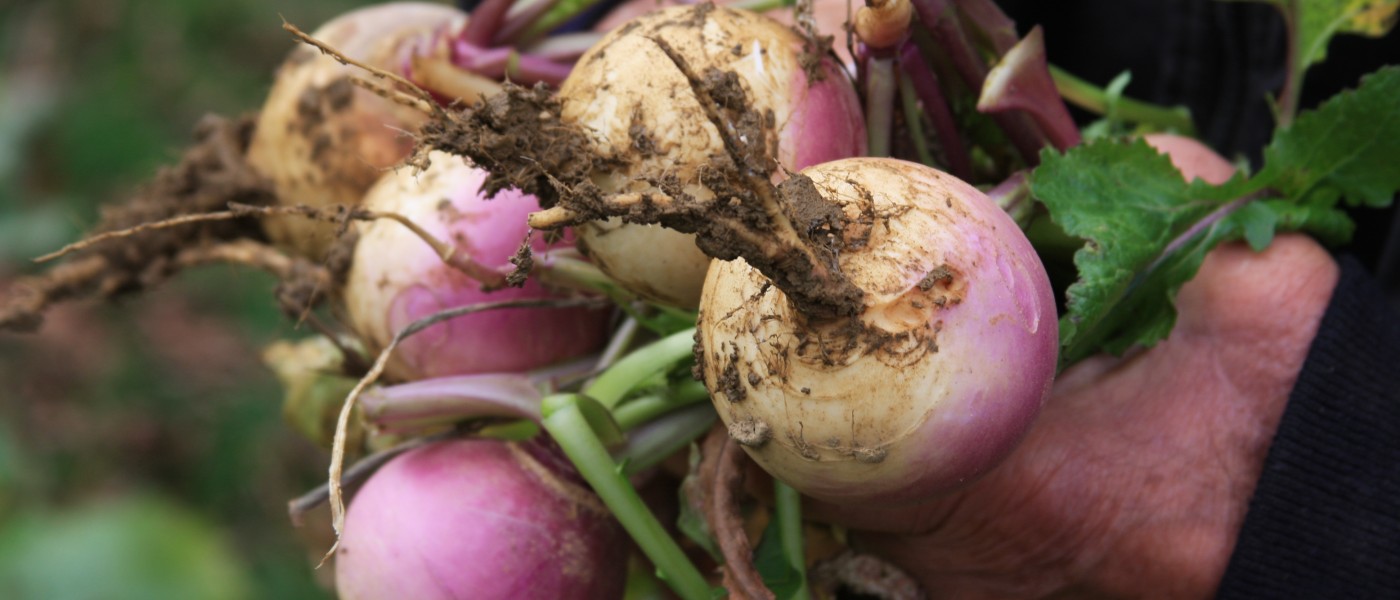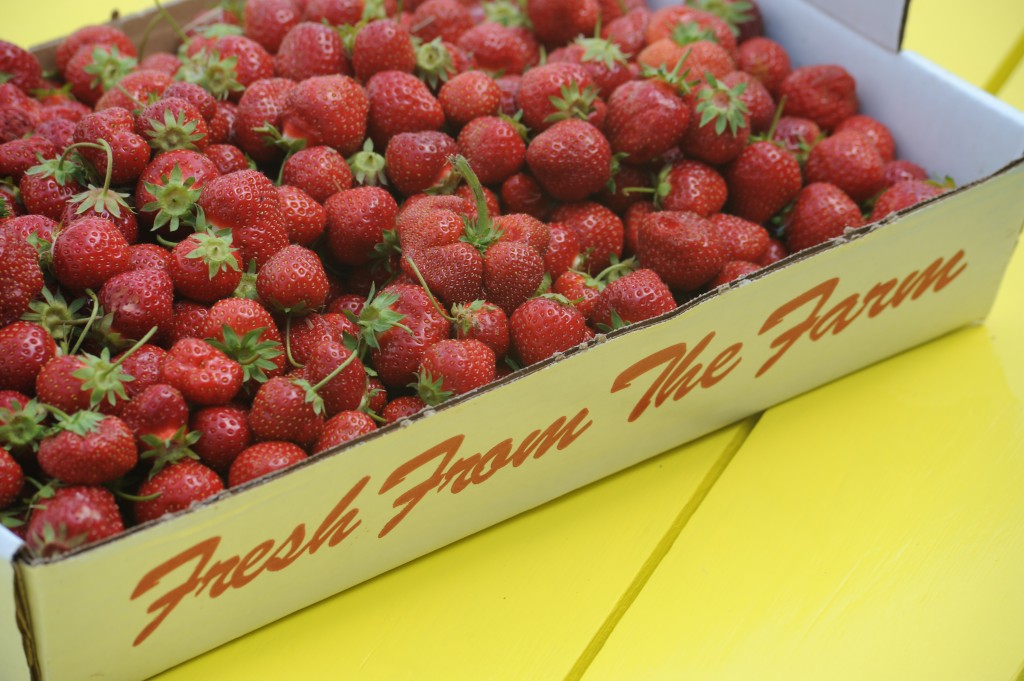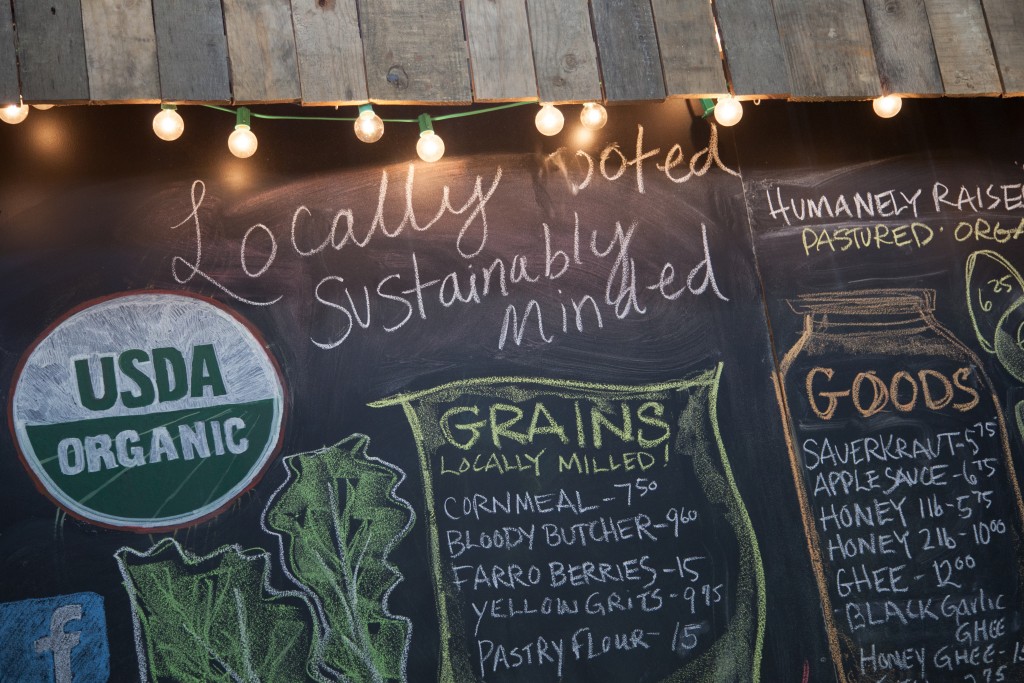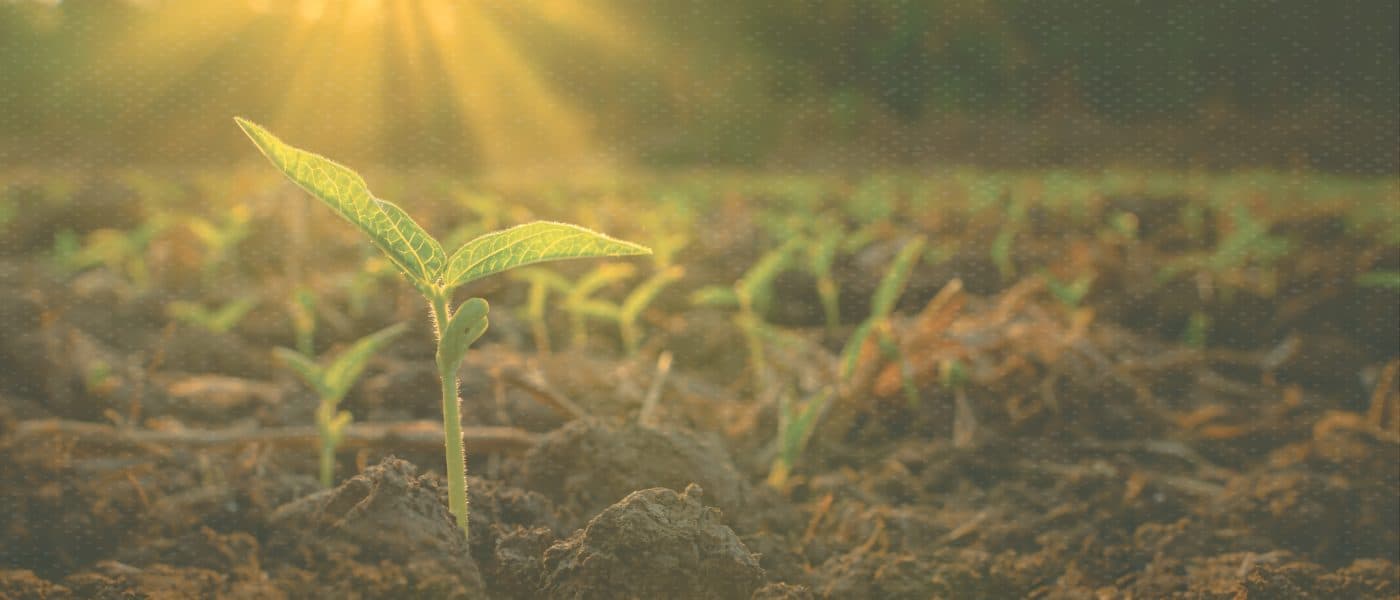Family farmers have an intimate relationship with the weather, and they know firsthand that it has become increasingly more variable, with weather extremes more frequent and intense as a result of climate change. Across the country the challenges vary—in the West severe, long-term drought has the potential to create a seismic shift in U.S. agriculture, while in other areas of the country record floods have pushed farms to the brink. Farmers must be prepared for extreme weather, and they are working to be as adaptable as possible in the face of climate change.
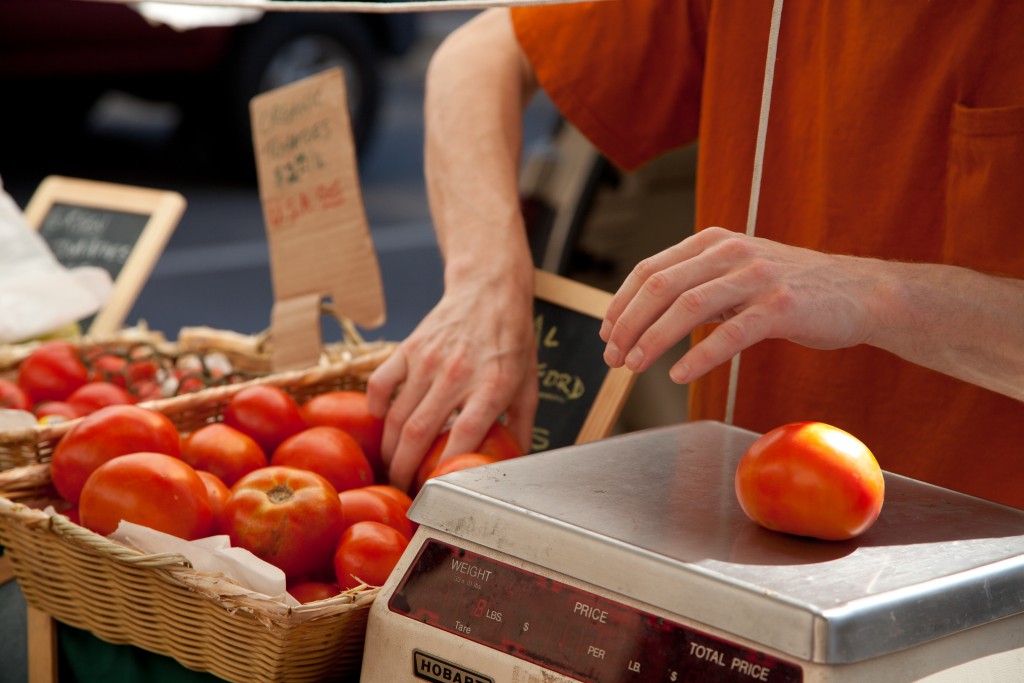
Photo © Patty O’Brien
Globally, the food system—propelled by corporate-controlled, industrial agriculture—is responsible for at least 40% of global greenhouse gas (GHG) emissions, which absorb and hold heat in the earth’s atmosphere and trigger climate change. The industrial food system is only possible through the intensive use of chemicals, pesticides, herbicides, fertilizer, water, and large-scale transportation, storage and distribution. Each of these aspects of corporate-controlled industrial agriculture is a major contributor to climate change.
The good news is that sustainable agriculture releases fewer GHGs than industrial agriculture and actually has the potential to sequester GHGs, or, as Neil Young puts it, “put the carbon back in the soil.”
So while family farmers must be resilient in the face of our ever-changing climate, adapting as the planet changes, they are also a critical part of the solution.
Here are six ways family farmers are helping us mitigate climate change:
1. Increasing the Resilience of Their Soil
Family farmers are building the organic matter (i.e. carbon) of their soil. Soils that are rich in carbon are more resilient in the face of erosion, have greater water retention capacity, and provide more nutrients to crops. Farmers increase their soil quality with methods Farmers increase their soil quality with methods like:
- crop rotation, incorporating legumes like clover and peas to draw nitrogen from the atmosphere and decrease their reliance on synthetic fertilizers;
- no-till farming, a way of growing crops or pasture from year to year without disturbing the soil through tillage; and
- cover crops, which keep topsoil in place, fix carbon and nitrogen in the soil, and help the beneficial microbes, fungus, bacteria and worms in soil thrive. A recent article in the New York Times told the stories of farmers who had returned to the age-old method of cover crops, to great results.
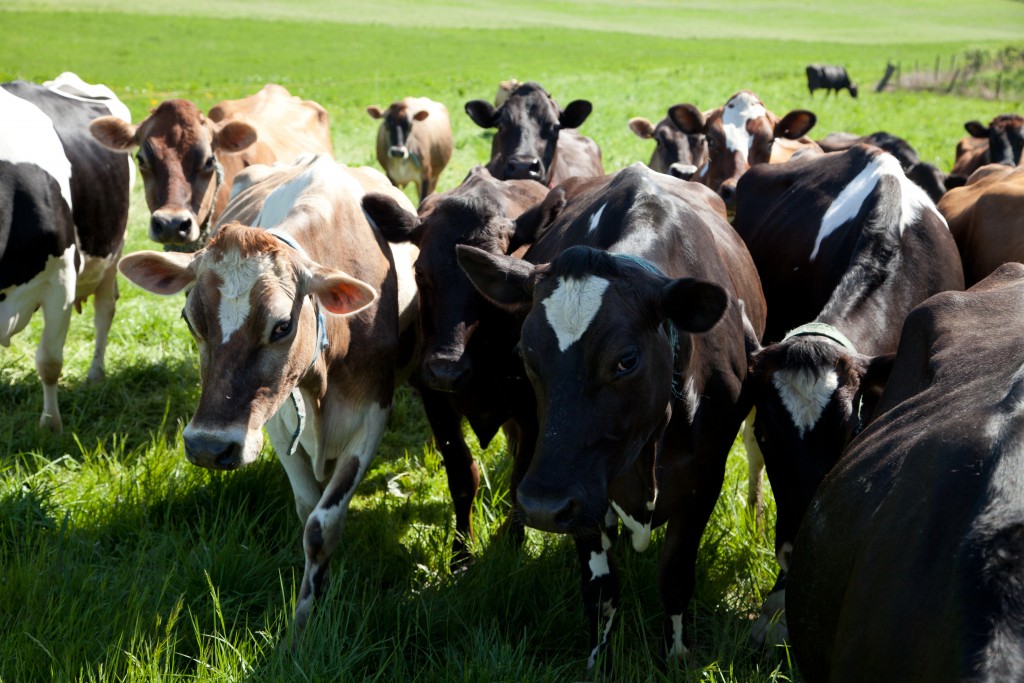
Photo © Patty O’Brien
2. Raising Livestock on Pasture
The corporate-controlled livestock industry would have us believe that raising livestock in confined systems is better for climate change than the alternative of raising livestock on pasture. A number of studies have shown that cows on grass emit more methane than cows fed grains (yes, we’re talking about cow farts and, to a greater extent, burps). But—and this is key—these studies failed to take into account the beneficial role of the pasture in climate change, as well as the huge manure lagoons that large confined animal feeding operations (CAFOs) create. In those lagoons, the methane in liquid manure has nowhere to go but up into the atmosphere. Finally, there’s one more factor to take into account: the vast quantity of corn and soy required to feed livestock in CAFOs. Conventional corn and soy grown for animal feed uses huge applications of synthetic fertilizers, herbicides and pesticides, which are derived from fossil fuels and contribute to climate change. When all of these factors are taken into account, CAFOs are a climate disaster.
The reality is that raising livestock on pasture actually puts carbon and other GHGs back in the soil! As our Farmer Hero Guido Frosini will tell you, when you raise livestock on pasture, what you’re really raising is grass. The perennial roots of pasture grasses are deep and extensive and help to draw carbon out of the atmosphere and into the soil, protect against erosion, and maintain and improve water quality. The quality of the grasses means better efficiency of digestion, which decreases the amount of GHG emissions from grazing livestock. Additionally, when livestock animals graze, they’re in herds that are suitable for the amount of space they occupy—meaning the area of land upon which they graze can handle their “output” (yes, we’re talking about manure). In a pasture system, manure is incorporated back into the soil with the helping hooves of the grazing herd, where it serves as a natural fertilizer and soil nutrient.
3. Cutting Food Miles By Keeping Food Local
When we choose local family farmers as the source for our food, we cut down on the energy used to process and transport food around the globe and the emissions that are spewed into the atmosphere as a result. As the distance food travels decreases, so does the need for processing and refrigeration to reduce spoilage. Critics have said this is an overstatement and food miles are not a huge factor in climate change, but to us it’s common sense: Supporting local farmers keeps them thriving, which means they can stay on the land, increasing the resilience of the soil, keeping farmland in our communities, and supporting other local businesses.
4. Land and Water Conservation
Family farmers are at the forefront of conservation efforts on their land. One federal program that supports family farmer stewardship of soil and water is the Conservation Reserve Program (CRP). This innovative and important conservation program incentivizes farmers to take environmentally sensitive land out of production and instead plant grasses, trees or shrubs. Today, CRP protects tens of millions of acres of American topsoil from erosion.
Since CRP was established in 1985 (the same year as Farm Aid), it has:
- Prevented more than 9 billion tons of soil from eroding, enough soil to fill 600 million dump trucks;
- Reduced nitrogen and phosphorous runoff compared to annually tilled cropland by 95 and 85 percent respectively; and
- Sequestered an annual average of 49 million tons of greenhouse gases, equal to taking 9 million cars off the road.
In addition to protecting our waterways from runoff, family farmers are innovating ways to decrease the amount of water they use to raise their crops and livestock. From targeted irrigation through drip systems that deliver water directly to the plants that need it, to soil moisture monitoring, family farmers are conserving one of our most precious resources—water.
5. Going Organic
As family farmers choose resilient growing methods, such as organic production, they decrease our reliance on chemical fertilizers, herbicides and pesticides, which not only release GHGs but also damage the soil, making it more susceptible to erosion and weather disasters and less productive. In the longest-running side-by-side comparison of organic and chemical farming systems, the Rodale Institute found that 27 years of organic practices increased soil carbon by almost 30 percent, while the fossil-fuel based systems showed no significant increase during the same time period. Moreover, the Rodale trials showed that corn and soybean yields from the organic systems matched the yields from conventional systems in normal years and exceeded them by about 30 percent in drought years. The Rodale report estimates that globally organic agriculture could sequester nearly 40 percent of current CO2 emissions.
6. Cultivating Green Energy
Family farmers are leading the way in renewable energy production, using wind and solar power as well as homegrown biofuels to power their own farms. Larger wind and solar installations on farms give farmers another income stream and put renewable energy into the grid, decreasing our reliance on fossil fuels and growing a sustainable energy future for all of us. Farmers are also growing crops for energy. Though the most common energy crop right now is corn for ethanol, farmers are innovating the use of new crops like native prairie grasses, which do not require chemical inputs like corn does, and promise to be more potent avenues for GHG reductions over the long term.
The Bottom Line
The corporate-controlled, industrial food system is a major contributor to climate change. Family farmers and ranchers using sustainable practices like these typically use less fossil-fuel energy, water, pesticides and synthetic fertilizers, create healthy soils, and take carbon out of the atmosphere and put it into the ground. Sustainable—or, more accurately, regenerative—family farms are critical to help us cultivate a resilient food system and lessen the impacts of climate change.
Our farmer hero, Guido Frosini, grazes his cattle in a sustainable way. Read more!Next
Guido Frosini
